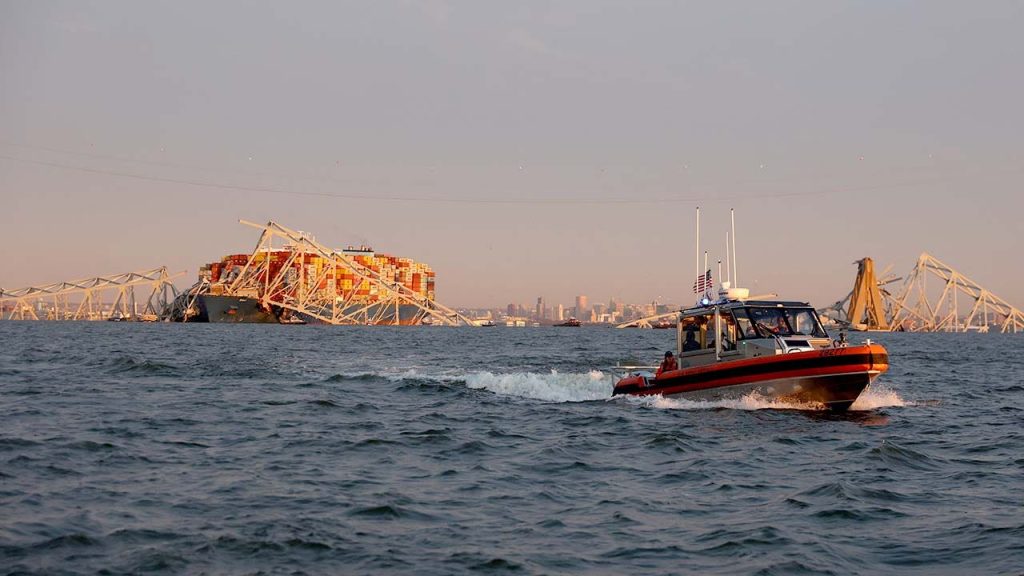The safety investigation into the Francis Scott Key Bridge collapse in Baltimore, Maryland, will include whether contaminated fuel played a role in a cargo ship losing power and crashing into the bridge. The ship, a 948-foot-long container vessel named the Dali, remained stuck on a collapsed bridge pillar as investigators tried to determine the cause of the incident. The ship’s lights started flickering just an hour into the journey, with a harbor pilot and assistant reporting power problems and loss of propulsion before the collision occurred. Crew members issued a mayday call before the crash, indicating that the vessel had stopped functioning.
Blackouts at sea are rare but can pose significant risks for ships. One potential cause of blackouts is contaminated fuel, which can interfere with a ship’s main power generators, resulting in a loss of propulsion. The NTSB chief Jennifer Homendy stated that the investigation will include a review of the ship’s operations and safety record, along with securing recorders from the vessel to understand the events leading to the crash. The ship, constructed by South Korea’s Hyundai Heavy Industries in 2015, has undergone over 20 port state control inspections with no detentions, but some deficiencies were noted in two reviews, including hull damage and issues with propulsion machinery.
The ship, operated by Singapore-based Synergy Marine Group and owned by Grace Ocean Pte., was carrying cargo for A.P. Moller-Maersk and departing from the Port of Baltimore to Sri Lanka. Two tugboats assisted the ship in leaving the terminal, but they withdrew early in the journey. The vessel had a total of two pilots and 22 crew members from India on board at the time of the collision. Despite maintaining a typical speed for vessels in the area, the ship was unable to drop anchors to prevent drifting, leading to the crash. The bridge collapse is anticipated to trigger a series of insurance claims to cover various losses, including the structure itself, business disruptions, and potential claims by crash victims against the ship operator.
Investigators had not yet boarded the Dali as of Tuesday, and rescue efforts had transitioned into a recovery operation as hopes of finding survivors diminished. The vessel could remain stuck on the collapsed bridge for weeks while investigations continue. An officer aboard the ship reported the smell of burned fuel and a loss of steering and electronics, indicating a complete blackout and loss of propulsion. Coordinating efforts involving multiple entities are underway to collect evidence and analyze the circumstances surrounding the incident, including any operational and safety issues associated with the ship and its operator.
The NTSB chief emphasized the collaborative nature of the investigation, involving various entities to gather information from the vessel’s recorders and assess the ship’s safety practices. While blackouts at sea are uncommon, they can create significant accident risks for vessels, especially if contaminated fuel affects main power generators. The history of the ship’s inspections, including recent reviews that identified deficiencies related to hull damage and propulsion issues, will be considered in the investigation. The bridge’s collapse, estimated to result in significant insurance claims and potential legal actions against the ship operator, underscores the broader implications of maritime accidents on industry infrastructure and commerce within the region.


